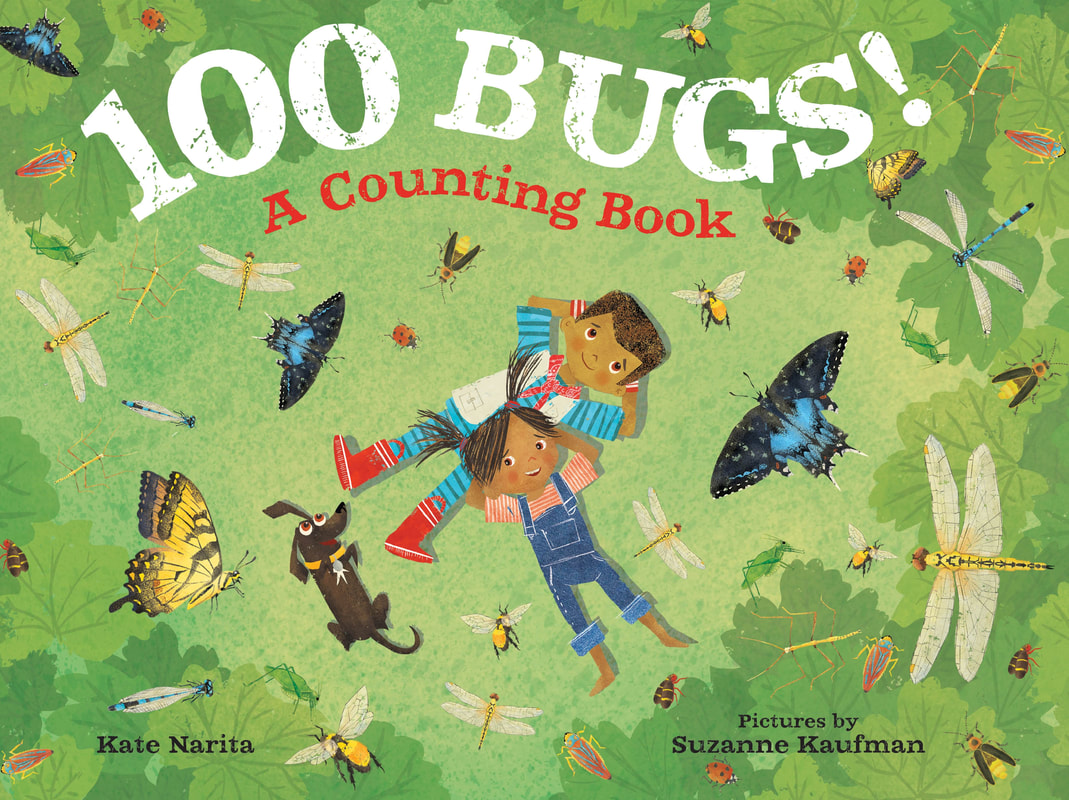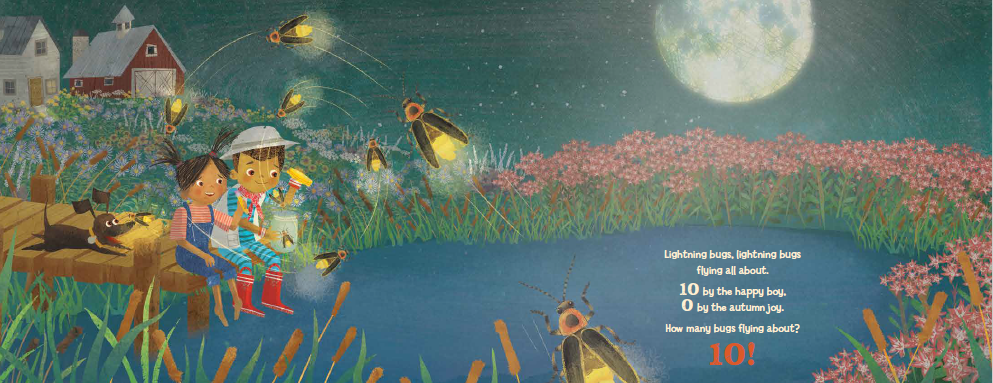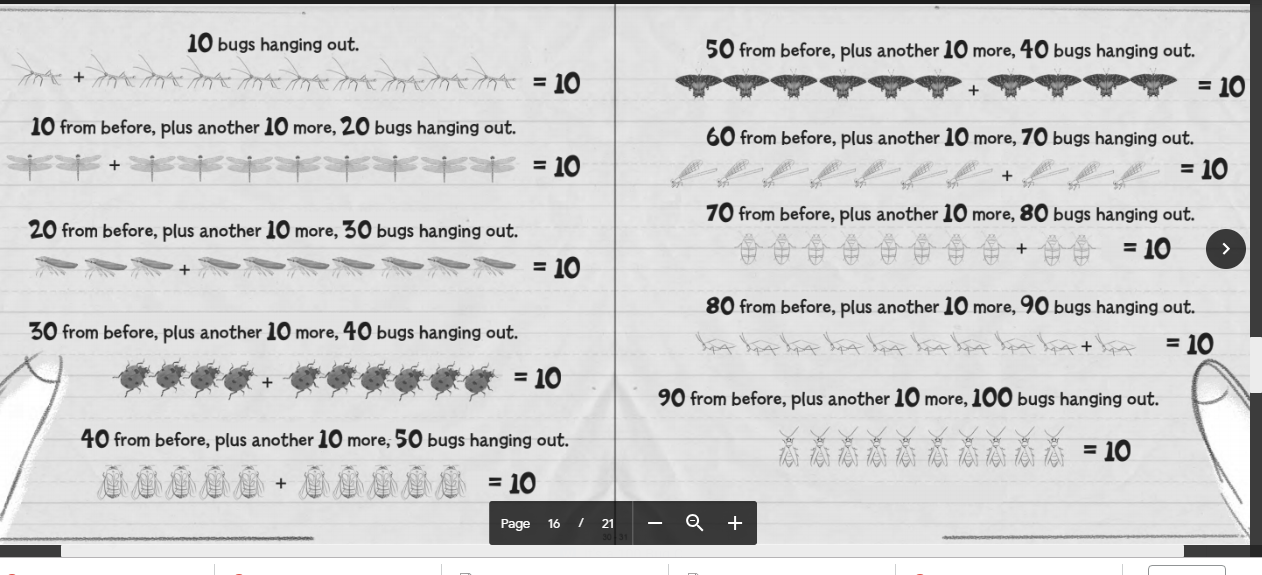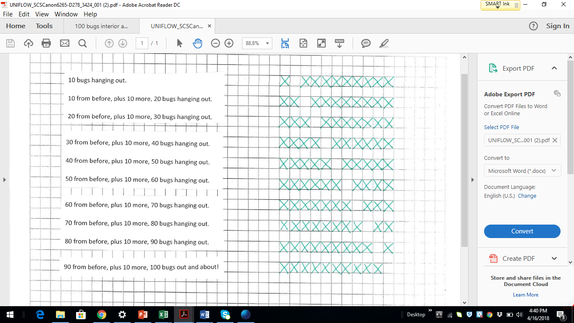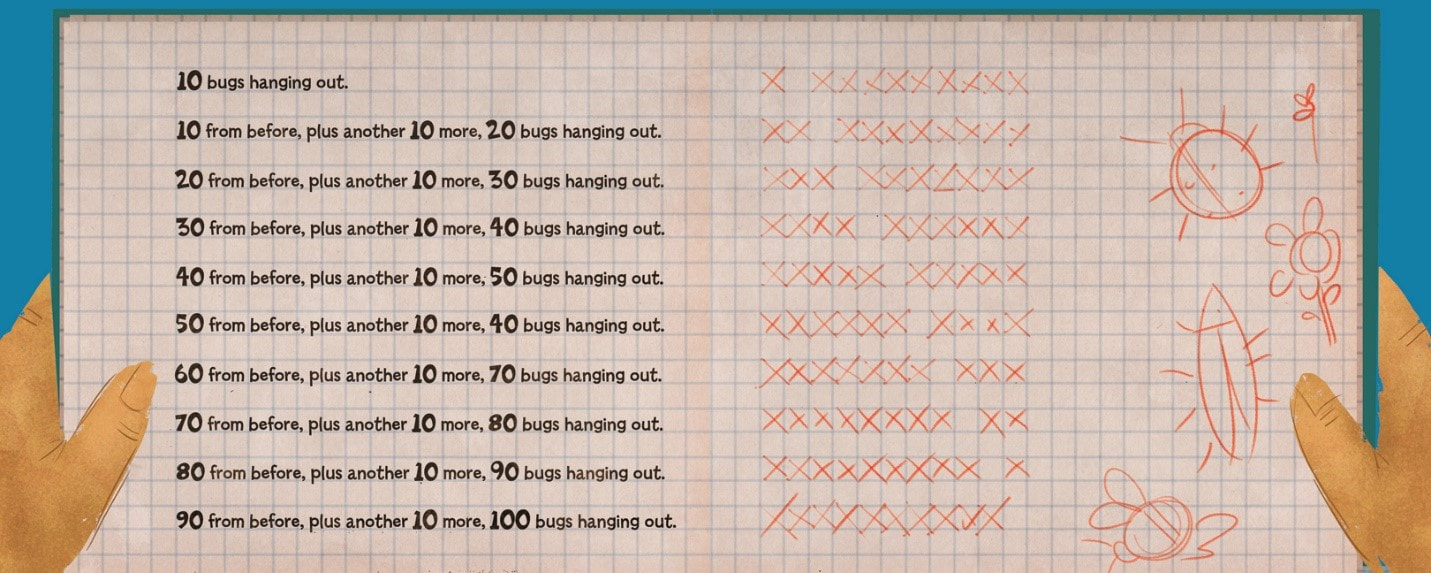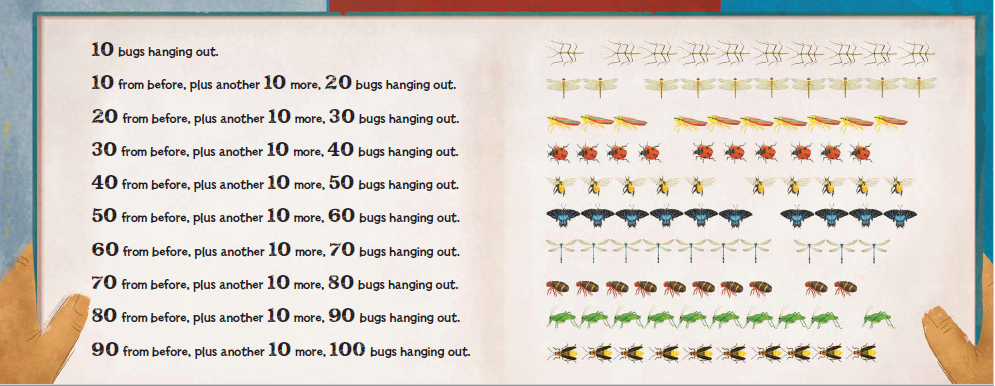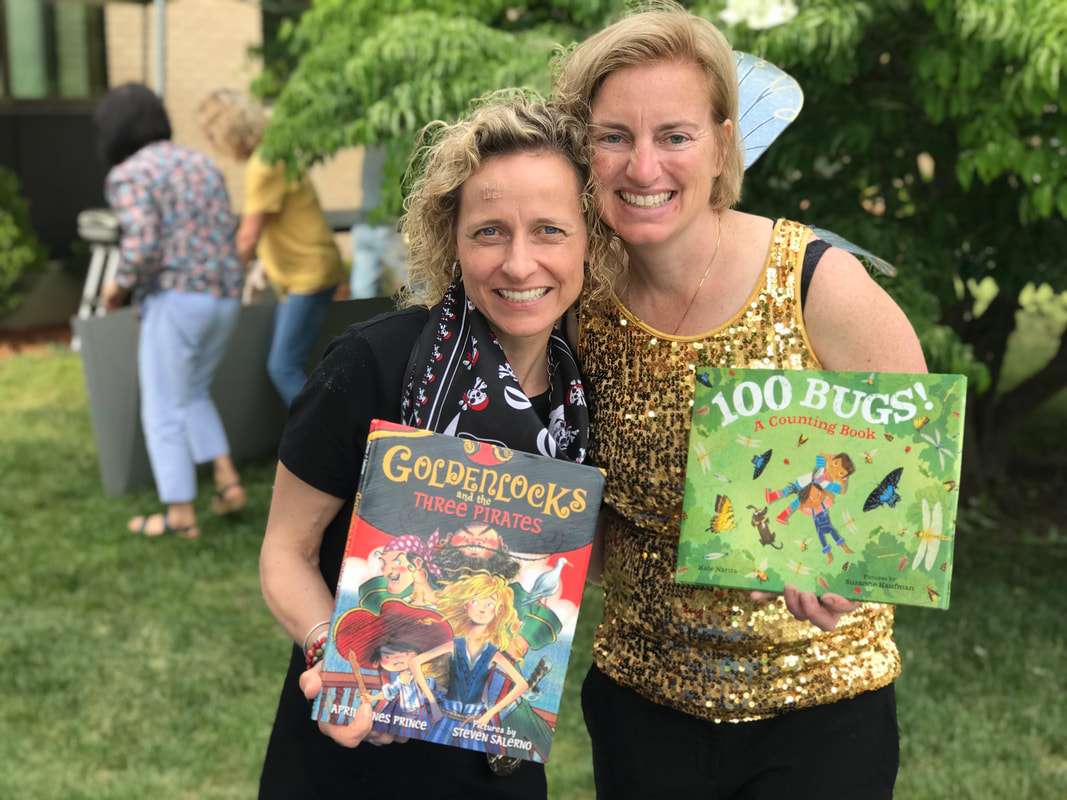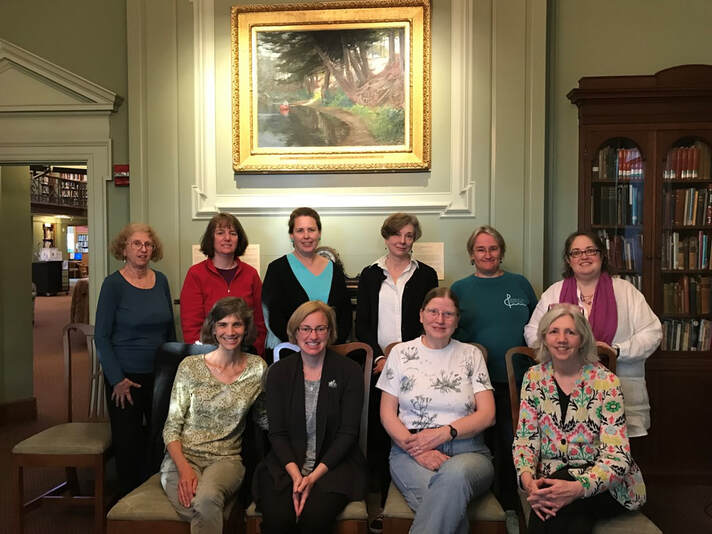 Concord Writing Group Concord Writing Group Some of you will recognize this post. I originally wrote it in May of 2018 for the Epic Eighteen blog. Since then, I've presented this topic at MRA and nErDcampNNE and nErDcampLI. Authors and teachers find it helpful, so I want to share it here. On December 13th and 23rd, I'll post the second half of the presentation which I've never blogged about before. It's geared toward educators. So looking forward to sharing it here with you! 10 drafts ago 100 Bugs! featured five damselfly species and five dragonfly species. I’ve always loved dragonflies, and I was fascinated when I discovered damselflies were a different species than dragonflies. Why weren’t there any children’s books about the differences between the species? I thought I’d write one. My writing group convinced me more insect variety would make the story pop. 9 drafts ago 100 Bugs! featured cosmos instead of yarrow. But farrow and yarrow sounds so much better than cosmos and yarrow! My writing group also pointed out that all the other rhymes really worked, but cosmos and farrow just didn’t, even if I really wanted it to. After all, I love fuschia and pale pink cosmos. There had to be a way to work them into this book. But since there aren’t any insects called gizmos, at least not that I know of, I had to weed out the cosmos and plant yarrow. Then, Suzanne Kaufman worked her magic! 8 drafts ago 100 Bugs! featured two dragonfly species, two damselfly species, two butterfly species, two bumblebee species, ladybugs and lightning bugs. Walkingsticks, leafhoppers, spittlebugs and katydids weren’t in the picture. When Susan Dobinick, the original FSG editor who eventually acquired 100 Bugs!, first contacted me, she told me she wanted me to revise and include ten different insects. She also stipulated that I definitely had to include the bug all the kids liked, then she blanked on the name. Thank goodness “walkingstick” came to her before the end of the conversation because I had no idea what bug she was talking about. All of my favorite bugs were already in the book! She also said she wanted scientific back matter for the ten different plants and the ten different insects. Finally, she acknowledged that I had a full-time teaching job and a family, but told me she needed the revision within a month’s time. Did I panic? Maybe a tiny bit, but becoming a published writer was a goal I’d been working toward for twelve years. I was willing to go to any length to do what needed to be done. So, I researched a couple of hours before work and a couple of hours after work each day. A month later there were ten different bugs, and back matter for all the insects and flowers. 7 drafts ago 100 Bugs! only featured a boy, not a girl. But that changed when editor Janine O’Malley brought Suzanne Kaufman on board to illustrate the book. Not only did the boy gain the cutest little sister ever, he also scored a dog all in the same draft! Happy boy! 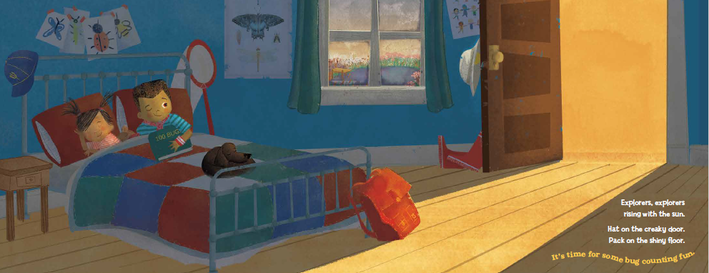 A New Beginning A New Beginning 6 drafts ago 100 Bugs! started with the walkingstick spread. It’s true. I swear it. I know it’s hard to believe that the super cute opening spread with the brother and sister in bed didn’t exist, but that’s the truth. Originally, the title page had the brother and sister leaving the house. The old title page resembled the current walkingstick spread. But Suzanne had already come up with the gorgeous sunrise and sunset end papers. So, Janine wanted the story to start with the kids waking up. I reached out to Melissa Stewart, April Prince and Joannie Duris to help me brainstorm the verse. We sent emails back and forth, but nothing seemed quite right. So, I went to bed. When I rose with the sun the next morning, the phrase, “Explorers, explorers rising with the sun,” streamed into my head and a new beginning dawned. 5 drafts ago 100 Bugs! A Counting book ended with the lightning bug spread. 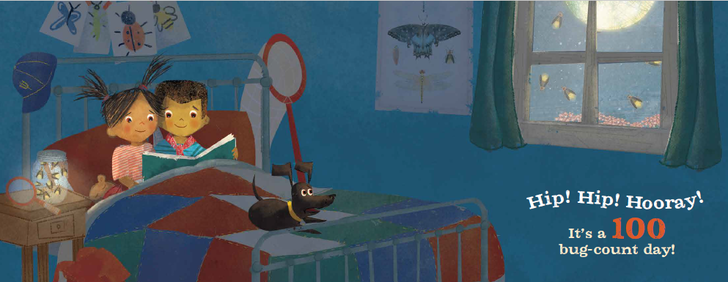 But that was before we started with the explorers in bed. The beginning has to hold the end of the book. So, I wrote the “Hip! Hip! Hooray!” spread so that Suzanne could showcase the explorers back in bed at the end of their day. 4 drafts ago 100 Bugs! didn’t include the brother and sister holding the book 100 Bugs! in their hands. That was all Suzanne and Janine’s idea. That’s the best part about collaborating on a book with other people. Their ideas and modifications create a much better product than it would have been had they not been involved in the book. 3 drafts ago 100 Bugs! A Counting Book was titled 100 Bugs Out and About. Yeah, my original title was playful, but it didn’t emphasize the mathematical concepts in the book enough. So, we tried some other titles that were way too mathematical: 100 Bugs! 10 Ways to Count to 10 or 100 Bugs! Counting by tens to 100 or 100 Bugs! 10 groups of 10. Finally, Janine and the marketing department suggested 100 Bugs! A Counting Book—an inviting, but not confusing name. 2 drafts ago 100 Bugs! counted by tens on each spread. But that didn’t work because there was no way to illustrate all those bugs on each spread. So, I came up with the idea to create a single spread near the end of the book that would feature all 100 bugs! Janine liked the idea and passed it onto Suzanne. The first draft of that spread didn’t work because it alternated between a line of illustrated bugs and a line of text counting by tens. It was hard to see the number of bugs growing. So, I put the spread up on a SMARTboard at school to see my teaching colleagues’, Kristin Milton, Pam Trefry and Teresa Zuckerman reactions. They looked as confused as I felt. But, as always, they had a solution—move all the text to the left-hand side, the verso, and move all the insects to the right-hand side, the recto. It was a great solution but how could I explain it to Janine and Suzanne? I decided to draw up a mock spread. I copied and pasted the counting by tens lines into one document, printed them and glued them down onto the left-hand side of a piece of graph paper. Then, to save time and because I’m not the world’s best artist to say the least, I used exes to represent the bugs in the array on the right-hand side of the book. Then, I emailed it to Janine who emailed it to Suzanne. Somehow I hadn’t communicated clearly to Janine that the exes were supposed to represent fully drawn bugs. So, when I saw the new spread, it had all the text on the left-hand side and 100 exes on the right… oops! I laughed out loud and explained what I had meant. The third time worked, and Suzanne created a gorgeous spread. 1 draft ago 100 Bugs! didn’t feature any perched damselflies.
What’s the big deal? Who cares, right? Well remember back in the beginning I told you that I wanted to write a book that distinguished between damselflies and dragonflies? Well, one of the easiest ways to tell them apart is to look at the wings of a perched dragonfly or damselfly. If they’re straight and open, you’re looking at a dragonfly. However, if they’re partially or completely closed, you’re looking at a damselfly. That’s the story of how one damselfly came to perch on the edge of the wishing well. It’s also the story of how 100 Bugs! A Counting Book transformed from a manuscript in my computer to a book one can hold in her hands.
0 Comments
Leave a Reply. |
Chalk + Ink ChatsWant to hang out with teachers who write and writers who teach? Fill this form to join our Archives
October 2023
Categories |

